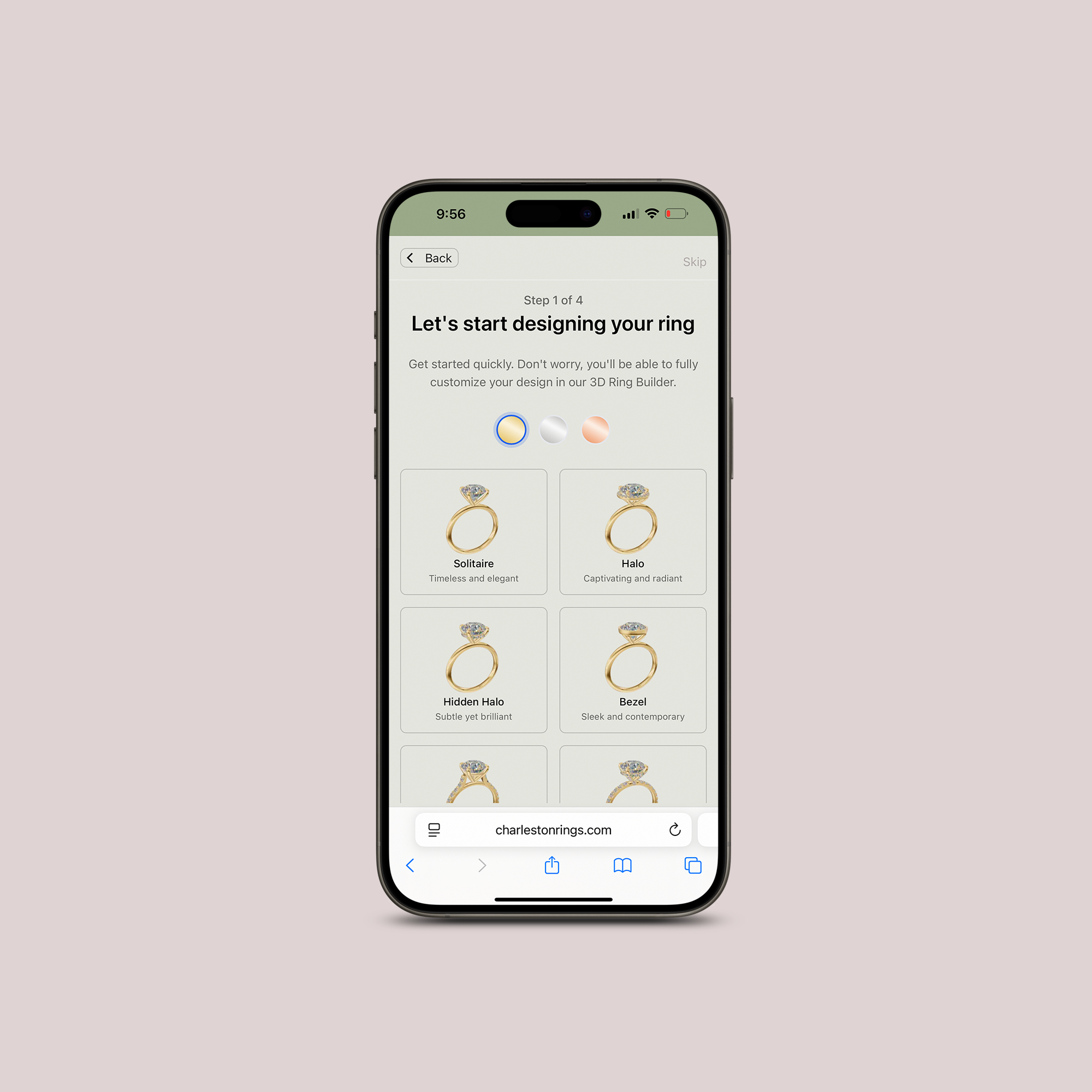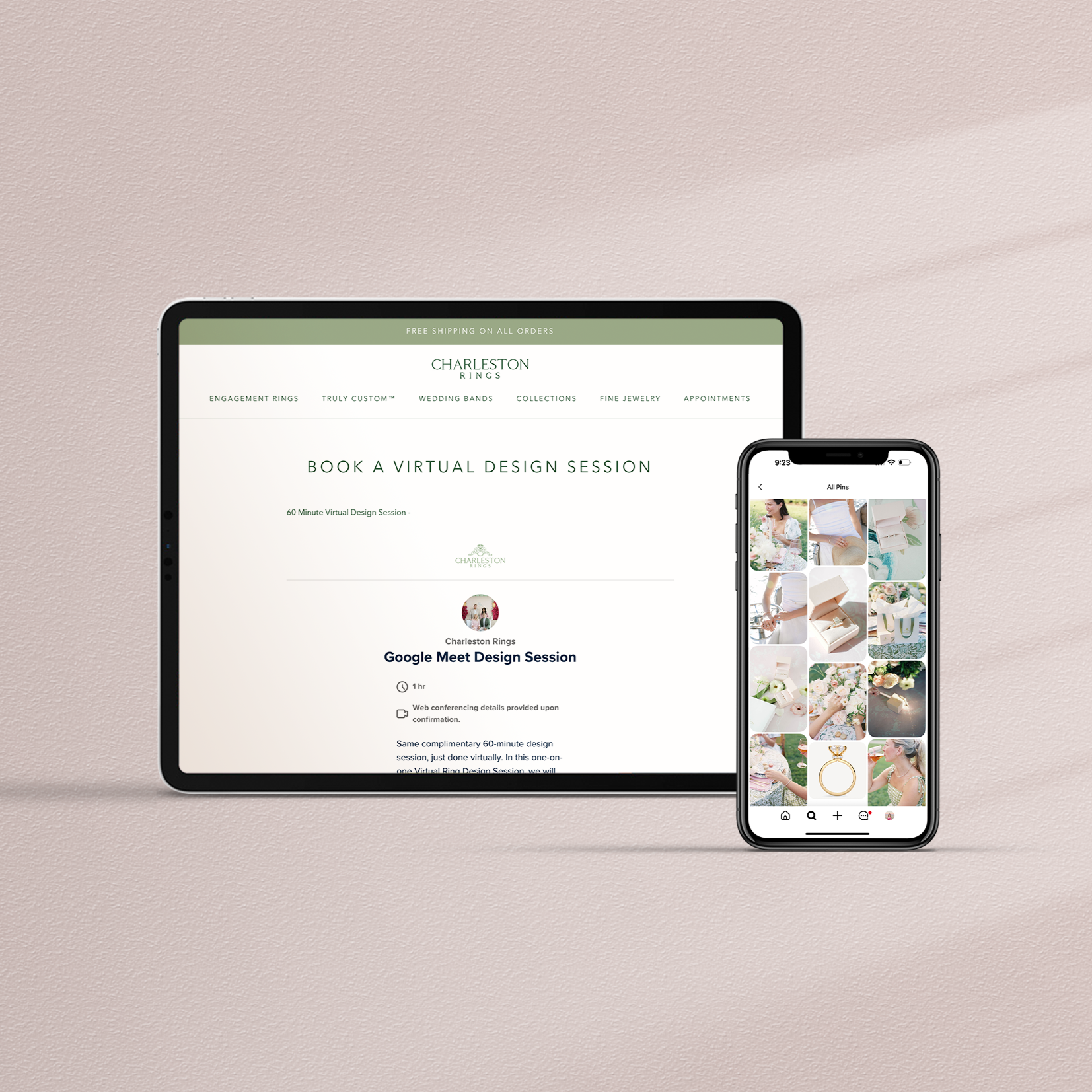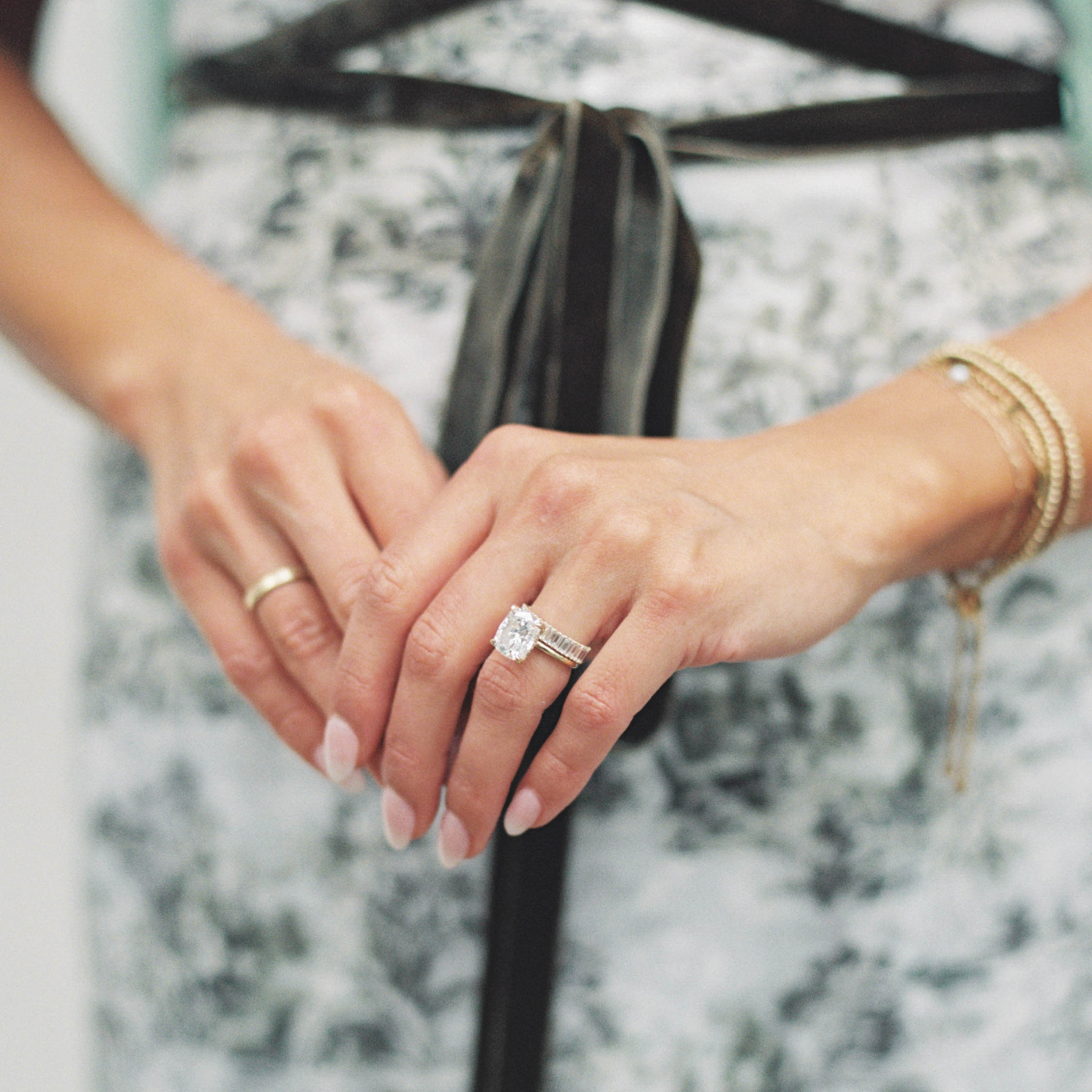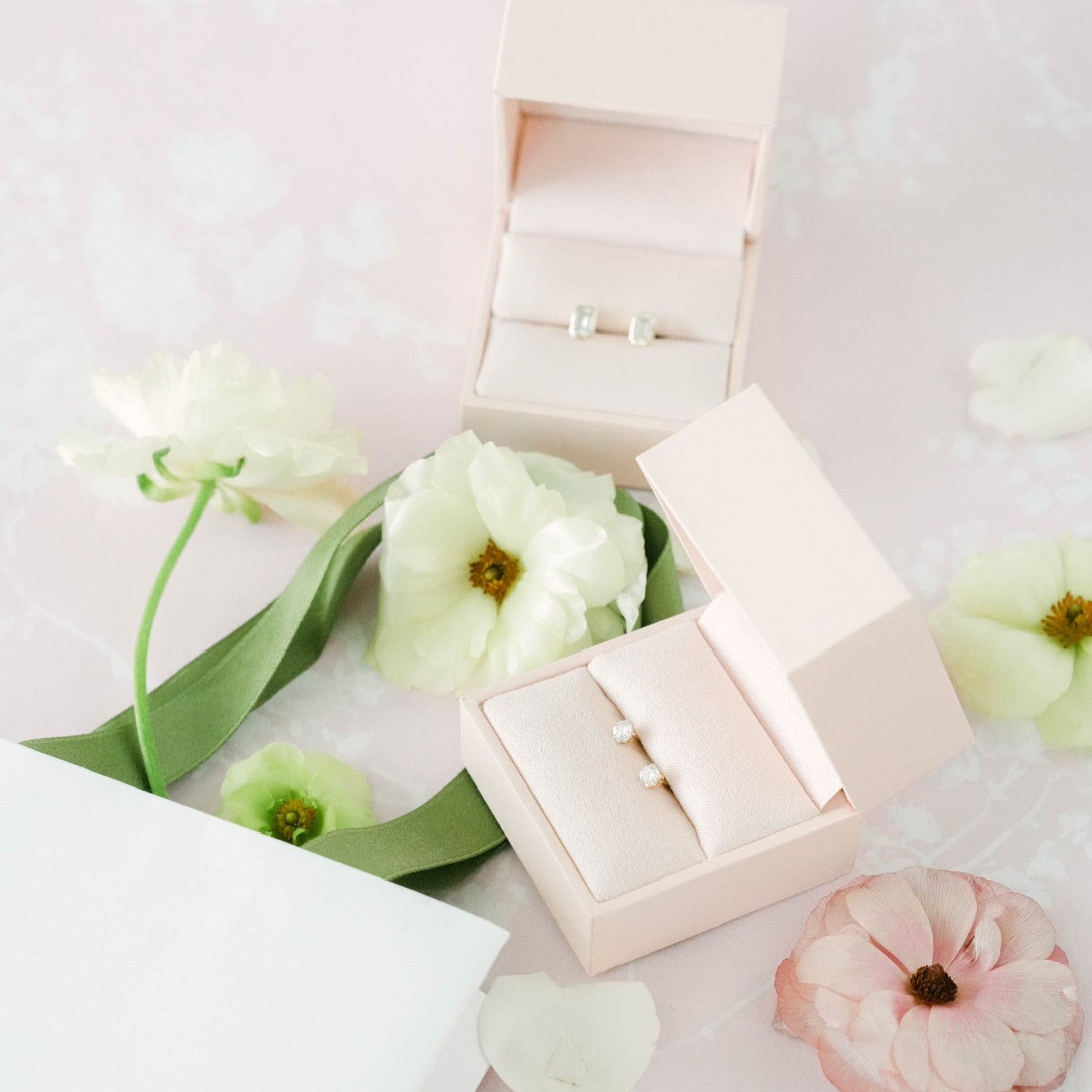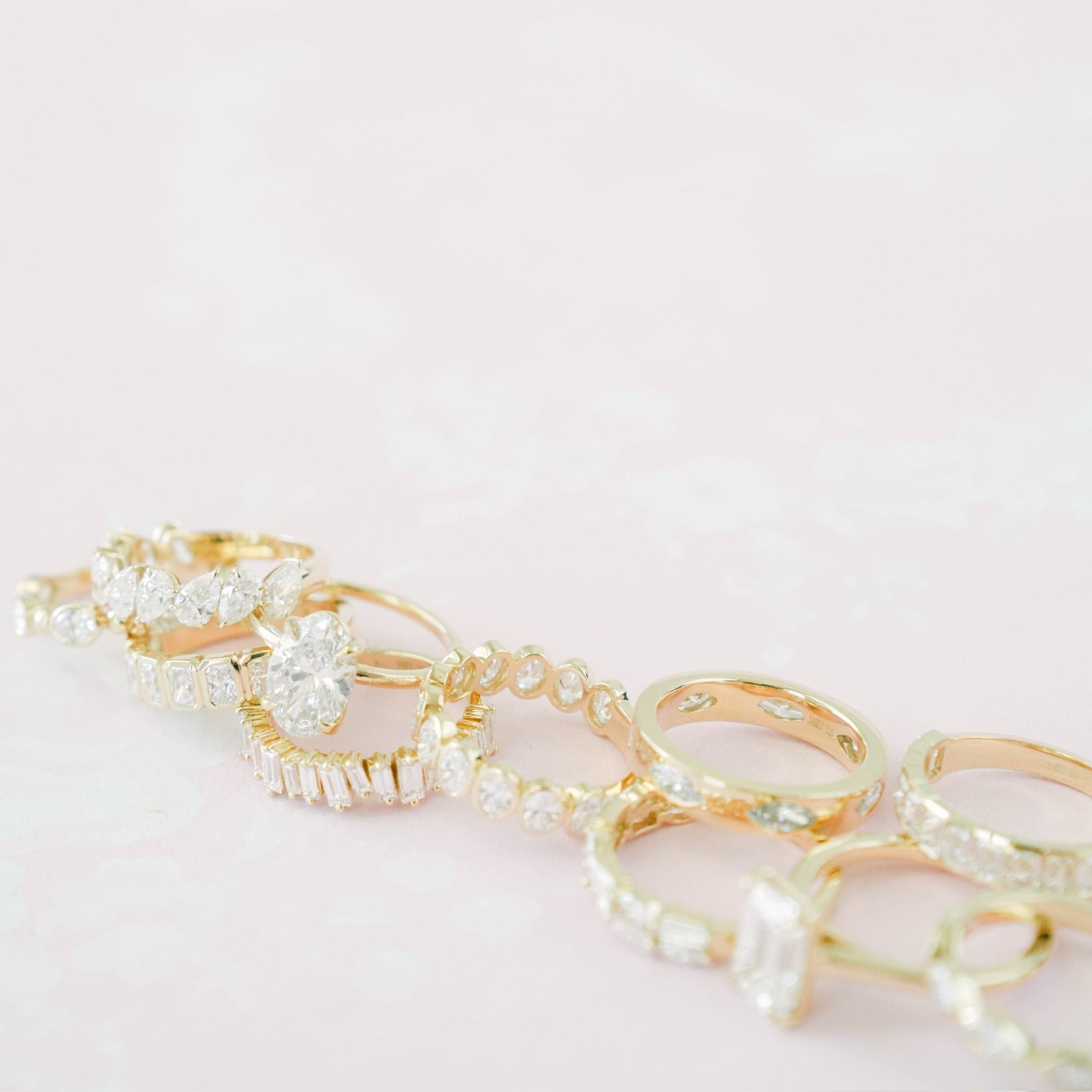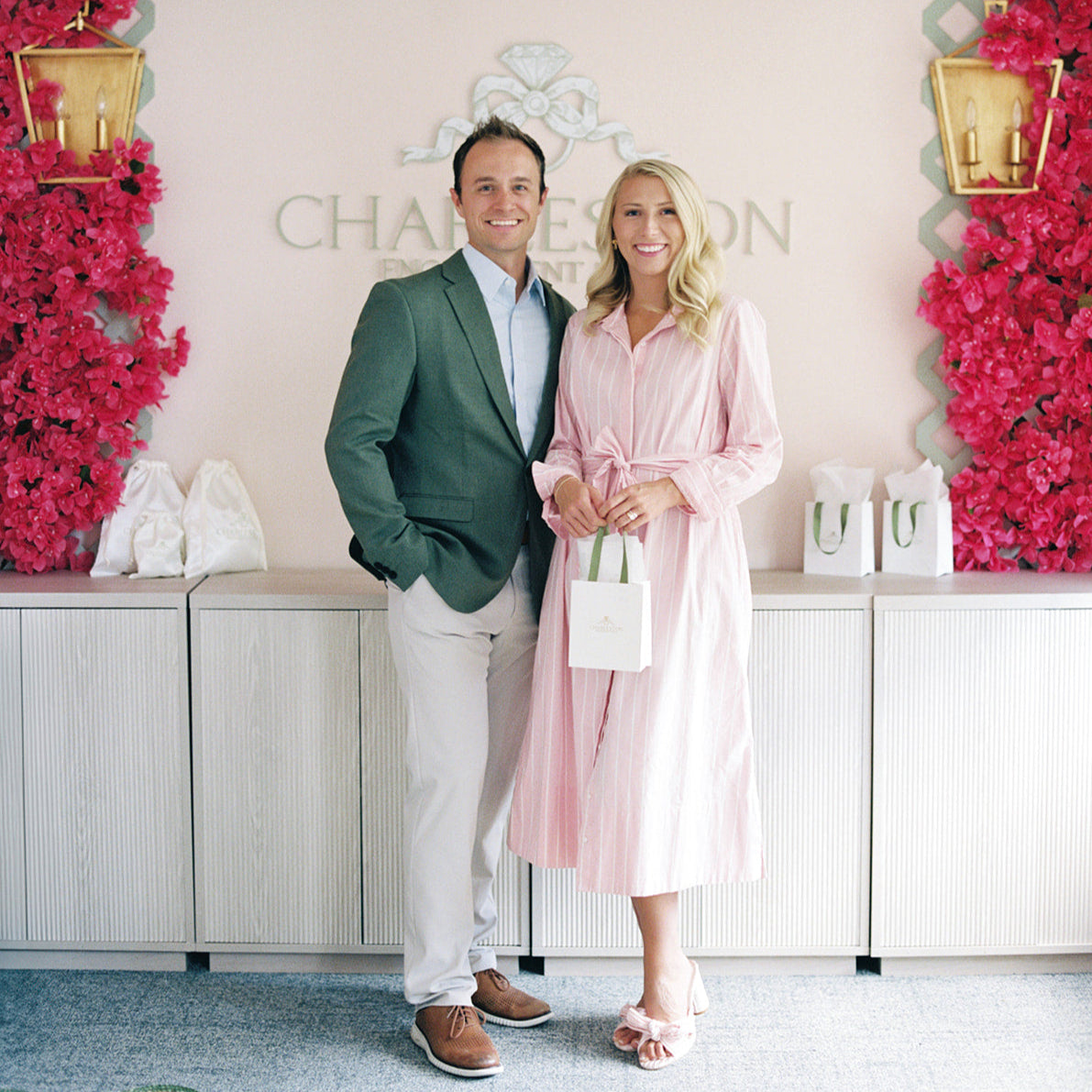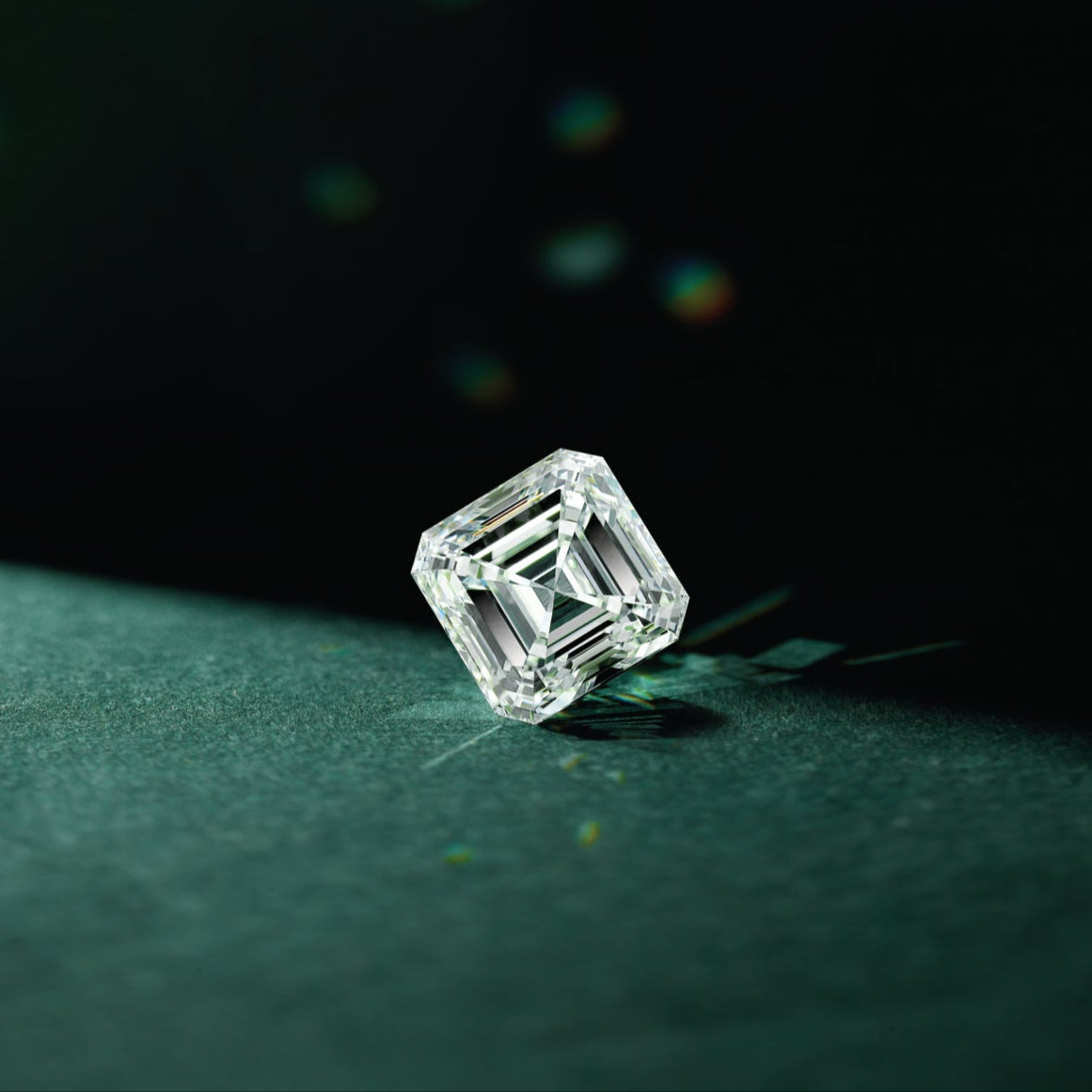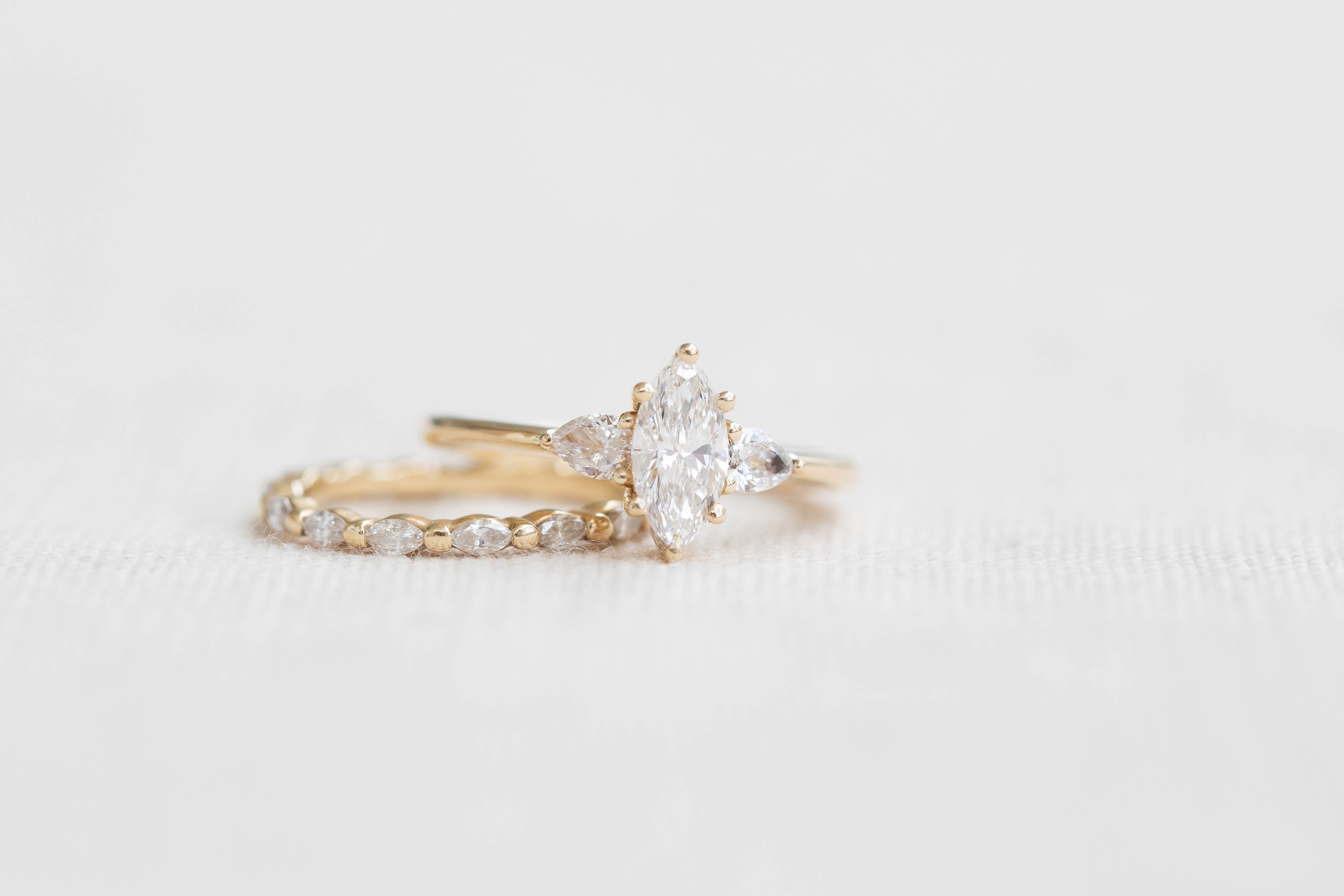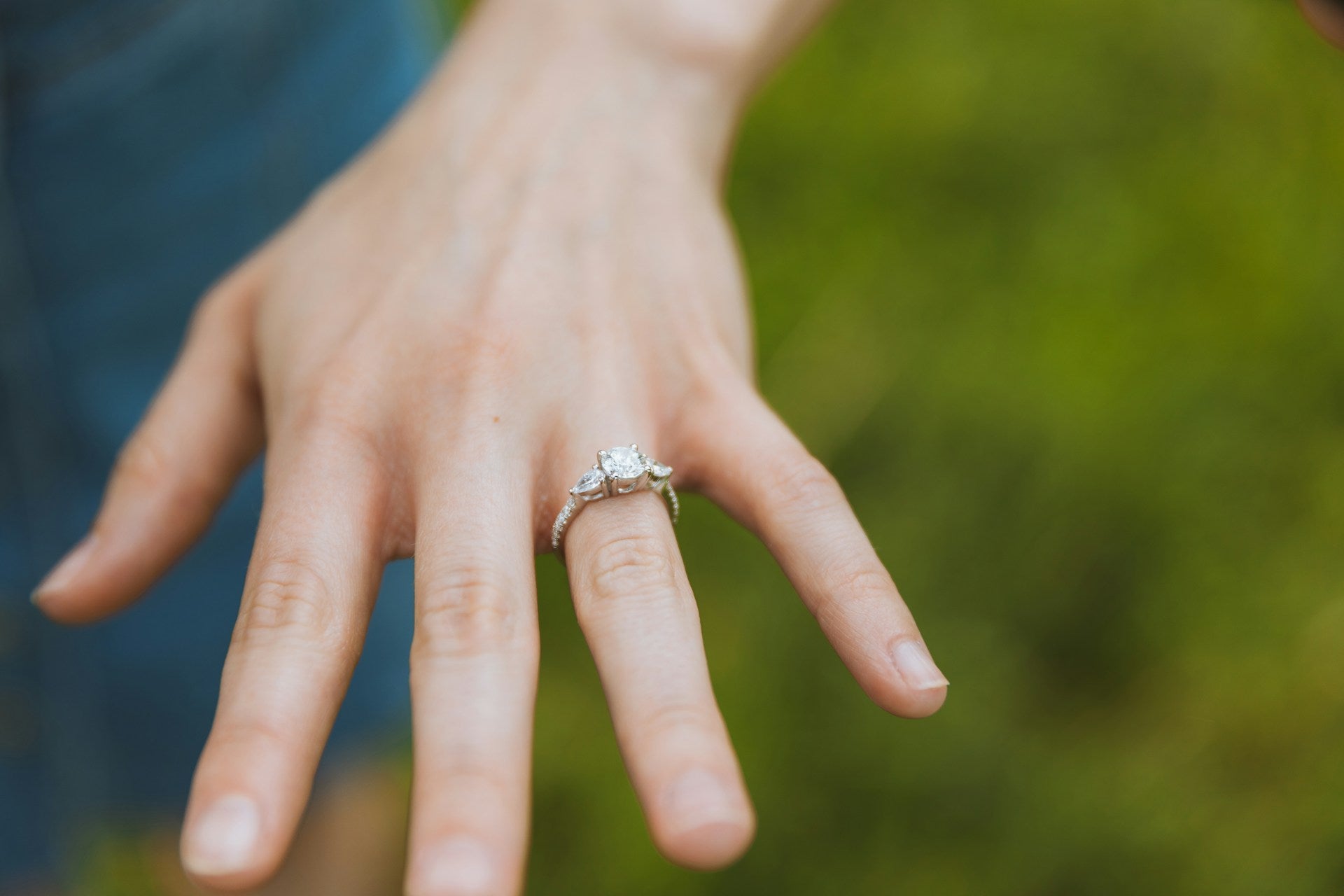
decoding the 4C's: choosing the perfect engagement ring
the 4c's: your compass in the world of diamonds
Enter the 4C's - Cut, Color, Clarity, and Carat. These are not just technical terms; they are your guideposts in navigating the complex world of diamond selection. The 4C's are what gemologists and jewelers worldwide use to classify and evaluate the quality of a diamond. Understanding these elements is not solely about finding a stunning piece; it's about making a wise investment.
Each of the 4C's plays a pivotal role in determining both the aesthetic appeal and the value of a diamond. Cut influences the diamond's brilliance; color its tone and rarity; clarity its purity; and carat its size and weight. Grasping these factors is vital for any couple embarking on this journey. It ensures that you select a ring that is not just visually captivating but also holds enduring value and significance.
As you dive into the world of diamond selection, remember that understanding the 4C's is empowering. It allows you to make an informed and confident decision, one that leads to a ring that truly resonates with your love story.
understanding the 4c's
cut: the key to unrivaled brilliance
The cut of a diamond is often hailed as the most crucial of the 4C's. It's not just about the shape of your diamond but how well it has been crafted from its raw form. The cut is responsible for a diamond's mesmerizing brilliance, its captivating sparkle that catches every eye.
The essence of a well-cut diamond lies in how it interacts with light. As light enters the diamond, it's the cut that determines how it dances within the stone and, importantly, how it reflects back to your eyes. A diamond that is cut with precision will showcase a high level of brilliance, meaning it sparkles intensely and radiantly.
tips for identifying a superior cut:
- Brilliance, Fire, and Scintillation: Look for a diamond that exhibits a vibrant play of light. Brilliance refers to the white light reflections from the diamond. Fire describes how well the diamond disperses light into a spectrum of colors. Scintillation is the sparkle that appears when the diamond, light, or viewer moves. A well-cut diamond will display a harmonious balance of these three aspects.
- Proportions Matter: Pay attention to the diamond's proportions, such as its depth and table size. These proportions are crucial as they influence how light travels within the stone. A diamond that's too shallow or too deep can cause light to escape from the sides or bottom, diminishing its sparkle.
- Symmetry and Polish: Symmetry is all about the precision of the diamond's facets, while polish refers to the smoothness of its surfaces. Both these factors play a significant role in how light is manipulated within the diamond. Diamonds with excellent symmetry and polish will exhibit a more striking and appealing appearance.
the art of choosing the right cut
Selecting a diamond with the right cut involves a keen eye. It's about looking for that balance of light performance, proportion, and finish that makes the diamond come alive with a fiery sparkle. Remember, a well-cut diamond will not only shine brighter but will also enhance the overall beauty and value of your engagement ring.
color: navigating the shades of your perfect diamond
understanding the gia color scale:
The color of a diamond is an intriguing aspect of its overall appeal, and it's meticulously graded on a scale established by the Gemological Institute of America (GIA). This scale ranges from D, denoting a perfectly colorless diamond, to Z, which indicates noticeable yellow or brown tints. Understanding this scale is key to choosing a diamond that aligns with your aesthetic and budget preferences.
The Spectrum of Color Grades:
- Colorless Diamonds (D, E, F): These are the pinnacle of purity and rarity. They exhibit no discernible color and are highly sought after for their icy-white appearance. However, distinguishing between these grades often requires a trained gemologist’s eye.
- Near Colorless Diamonds (G, H, I, J): Offering a balance of value and quality, these diamonds might contain minor traces of color. The subtlety of this coloration generally goes unnoticed to the untrained eye, especially once the diamond is set in a ring, making them a popular choice.
- Faint Color Diamonds (K, L, M): These diamonds display a soft yellow hue, which is more apparent, yet they can exude a warm charm. In settings like yellow gold, these diamonds can appear more colorless, enhancing their appeal.
- Very Light and Light Color Diamonds (N through Z): Progressing towards Z, diamonds exhibit more pronounced yellow or brown hues. They're less conventional for engagement rings but can offer a distinctive and colorful alternative.
choosing the right color for you:
- Personal Preference is Key: The choice of diamond color is deeply personal. While some may cherish the crisp, colorless sparkle, others might be drawn to the warmth of a faintly colored diamond. It's essential to view various grades in different lighting to understand their true appearance.
- Balancing Budget with Beauty: Consider your budget when selecting the color grade. While D to F diamonds are the most coveted for their rarity, G to J diamonds provide an excellent balance of near-colorless beauty at a more accessible price point.
- The Influence of the Setting: The metal of your ring setting can also impact the diamond's perceived color. A yellow gold setting can mask some yellowish tones in lower-grade diamonds, potentially allowing for budget flexibility without compromising on aesthetics.
Remember, the most important factor is how the diamond resonates with you. Whether it's the pristine allure of a colorless gem or the unique charm of a diamond with a hint of color, your choice should reflect your personal style and the story you want your ring to tell.
clarity: unveiling the purity of your diamond
Clarity is a critical component of the 4C's, playing a vital role in defining a diamond's allure. It refers to the presence (or absence) of inclusions (internal flaws) and blemishes (external imperfections). These tiny imperfections can influence how light travels through the diamond, impacting its overall brilliance and beauty.
Understanding the GIA Clarity Scale:
- Flawless (FL) and Internally Flawless (IF): These represent the zenith of clarity. FL diamonds are entirely free of inclusions and blemishes, while IF diamonds may have some minor surface blemishes, both only discernible under 10x magnification. Their rarity makes them highly prized and valuable.
- Very, Very Slightly Included (VVS1 and VVS2): Diamonds in this category have minute inclusions that are challenging to detect even under 10x magnification. These are excellent choices for those seeking near-perfect clarity.
- Very Slightly Included (VS1 and VS2): VS-grade diamonds have minor inclusions, visible under magnification but typically not to the naked eye. They offer a balance between high quality and value.
- Slightly Included (SI1 and SI2): SI diamonds have noticeable inclusions under magnification. These inclusions may sometimes be visible to the naked eye, particularly in SI2 diamonds. They are often chosen for their more accessible price points.
- Included (I1, I2, and I3): Diamonds in the I grade have inclusions visible without magnification. They are the most affordable but also have the most noticeable flaws.
balancing clarity with other aspects:
- A Diamond's Overall Appeal: It's essential to remember that a diamond's clarity should be considered in conjunction with its other attributes. A well-cut diamond with lower clarity can still exhibit stunning brilliance.
- Matching Clarity to Your Needs: When choosing clarity, consider how it aligns with your personal preferences and budget. An SI or VS diamond, for example, can offer excellent value for money, balancing quality with cost.
- Viewing Diamonds in Person: To truly appreciate the impact of clarity on a diamond's appearance, it's beneficial to view them firsthand. This allows you to see how different clarity grades affect the diamond's look and how it aligns with your expectations.
Ultimately, selecting a diamond is about finding the right balance among the 4C's. A diamond with slightly lower clarity can be a beautiful and smart choice, especially when combined with a great cut and color. It's about what appeals to you visually and emotionally, and fits within your budget.
carat: understanding the true impact on your diamond's appeal
Carat weight, often misconstrued as the sole measure of a diamond's worth and size, plays a nuanced role in the diamond selection process. Understanding the true impact of carat weight on a diamond's appearance and value is crucial in making an informed choice.
size vs. carat weight:
- Not Just About Size: Carat weight refers to the diamond's weight, not necessarily its size. This means that two diamonds of the same carat weight can appear different in size due to other factors like cut and shape. A deeper cut diamond may weigh more but appear smaller than a shallower cut diamond of the same weight.
- The Role of Cut: The cut of a diamond significantly influences its visual size. A well-cut diamond can appear larger and more brilliant, regardless of its carat weight.
carat and overall value:
- Beyond Just the Weight: While it's true that larger diamonds are rarer and thus more expensive, a diamond's value is not determined by carat weight alone. The interplay of all 4C's — cut, color, clarity, and carat — collectively defines a diamond's worth.
- Balancing Quality and Size: A diamond with a higher carat weight but poor ratings in other C's may actually be less valuable than a smaller diamond with excellent cut, color, and clarity.
choosing the right carat weight:
- Personal Style and Practical Considerations: Consider the wearer's style, the size of their finger, and the ring's setting style. A larger diamond isn't always the optimal choice; sometimes, a smaller diamond can be more suitable and aesthetically pleasing.
- Balancing Carat with Budget: Remember to balance carat weight with your budget and the other 3C's. It's about finding the right diamond that not only fits your financial considerations but also resonates with your personal preferences and the ring's overall design.
In conclusion, while carat weight is a vital factor in the selection process, it should not overshadow the importance of the other C's. A well-balanced approach, considering all aspects of a diamond's quality, will lead you to a choice that's not only visually stunning but also a sound investment. It's about finding that perfect harmony between size, quality, and cost, ensuring your engagement ring is as special as your love story.
embracing the 4C's in harmony
As you stand at the threshold of one of life's most beautiful commitments, selecting the perfect engagement ring is a journey filled with joy and discovery. We encourage you to embrace a balanced approach in considering the 4C's — Cut, Color, Clarity, and Carat.
Each of these elements plays a crucial role in defining the beauty and value of your diamond, and understanding their interplay is key to finding a ring that truly resonates with your love story.
personalized guidance awaits at charleston rings
We understand that the nuances of diamond selection can be complex. That's why we invite you to seek personalized assistance at Charleston Rings. Our experts are here to provide you with a deeper understanding and hands-on experience with a range of diamonds.
Whether you're drawn to the brilliant sparkle of a perfectly cut diamond, the pristine beauty of a colorless gem, the allure of a flawless clarity, or the impressive presence of a certain carat weight, our team will guide you through each step!

